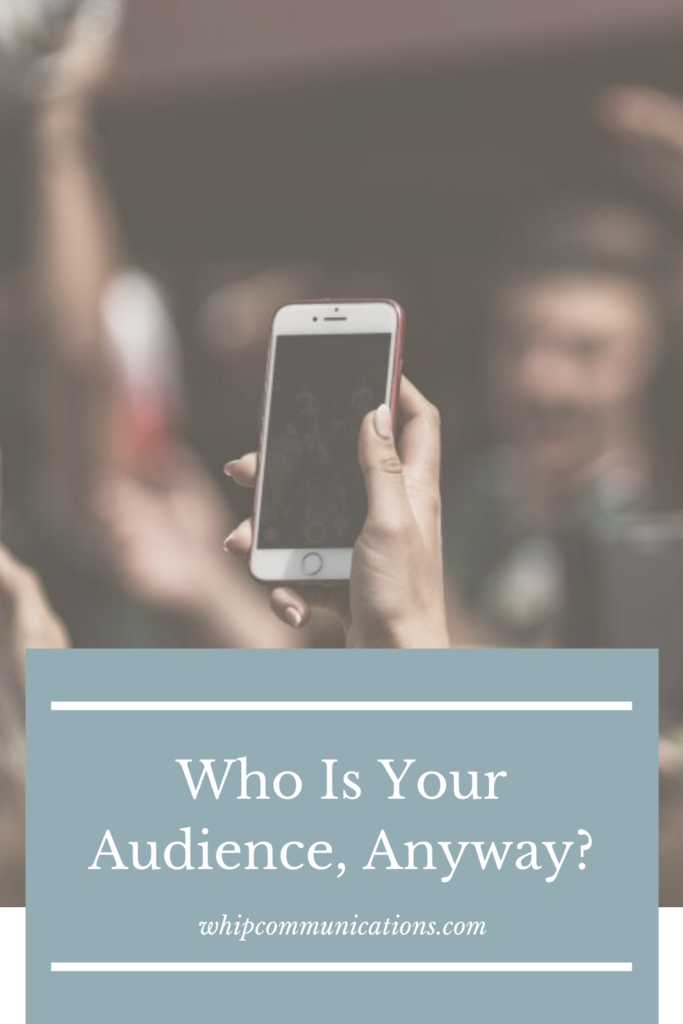When figuring out what content to post, there are three basic things that you need to know about your audience. They are: age, gender, and interest. Here’s why those demographics are important for creating content for your audience.

Age
One of the most influential factors to consider when it comes to creating content for your audience is their age. From Baby Boomers to Gen Z, preferences and communication styles vary greatly and it’s important to be aware of what appeals most to your target age group. Like the saying goes, “one size does not fit all!”
Just like there is a variety of age groups, there is also a large range of content types. From videos to blogs, and print material to mobile apps, the strategies for talking to each age group are endless. Different social media platforms have drastically different user bases.
So what type of content fits each age group? In general, marketers are able to turn to general generational preferences for content.
CASE IN POINT: That’s not how any of this works!
So what types of content does each age group relate to the most?
- Baby Boomers
- Print media
- Radio
- Video content (long)
- Generation X
- Newsletters (direct mail & email)
- Blogs
- Generation Y (Millennials)
- Social Media
- Mobile content
- Blogs
- Generation Z (iGeneration)
- Social Media
- Memes
- Imagery
- Videos (short)
Keep in mind that these generational preferences are broad — and not always totally accurate. Age, however, is a great place to start when segmenting audiences and narrowing down how to reach your audience where they are.
Gender
Today, gender-based marketing seems to be dwindling due to shifts in gender roles and traditional gender identification. But being aware of gender in your audience has a great impact on the effectiveness of your marketing efforts. There are very different ways to connect with different genders.
CASE IN POINT: Carl’s Jr. vs Kraft ads — and this wild Jekyll/Hyde situation going on with Hugh Jackman.

“Men are from Mars and Women are from Venus” is a saying for a reason: women and men oftentimes respond to content with different emotions. (We doubt any of our fellow ladies enjoyed that sexist Carl’s Jr. ad either.) For this reason, content should be created carefully, with an awareness of the potential for different responses in men and women.
What are some examples of general differences between men and women’s emotional responses?
- Men
- Less variety of emotions
- More likely to view content based on positive emotions
- More suggestible
- Women
- Greater variety of emotions
- More sentimental
- More emotionally complex
Keeping gender in mind, while remaining inclusive is ideal and positions your content to have the edge it needs for success.
Interest
At the end of the day, your audience needs to have an interest in what you’re saying!
With the prominence of today’s digital and social media, we marketers are able to keep tabs on the interests of people and more specifically, our target audiences. People’s social interests can be interpreted and used to create content most relatable.
Case in point: Aerie’s #AerieReal campaign and inclusive modeling strategy.

Did you know that Facebook can target you based on your income level, interests, job title, and even marital status? As a consumer, that can be pretty terrifying, but as a social media strategist, it’s a key part of the job!
Interest-based targeting engages audiences through relatability and personalization. For this reason, relevant influencers and celebrity endorsements have revolutionized marketing, especially when appealing to Millennials and Gen Z consumers.
Another example of interest-based targeting is highlighting brand transparency and using “real” people to market. When customers believe that they are represented in advertising, they’re more likely to buy whatever you’re selling, whether it’s literally or figuratively.
There are so many ways that interest-based marketing can further narrow down content creation and successfully reach target audiences. Let us help you figure it out!
Pin this for later 📌


[…] of Snapchat users are under the age of 25 and in 2016, $90 million was spent on Snapchat ads. While Snapchat draws a massive amount of […]
[…] can target and build personal relationships with your audience. Whether you’re looking to reach millenials, gen x-ers or baby boomers, there’s a social […]
[…] we were confused but highly amused at the tweets. Tapping into a funny or sassy brand voice online can attract people who maybe wouldn’t normally pay attention to your brand but are here for the […]
[…] good news is that social media isn’t just about going viral. Understanding your audience and knowing what type of content suits your brand can give you great engagement, viral or […]
[…] of Twitter users are between the ages of 35 and 65. While other social media platforms like Snapchat and TikTok are […]
[…] yourself whether or not your audience aligns with TikTok’s user demographics. For example, 47.4% of US users are between 10 and 29 […]
[…] Need a more in-depth look at types of audiences? We’ve got you covered. […]